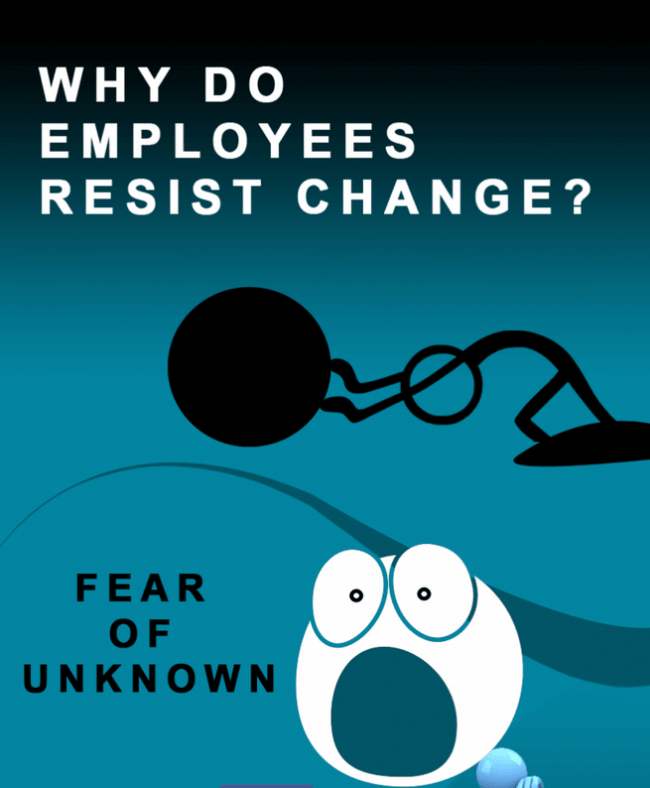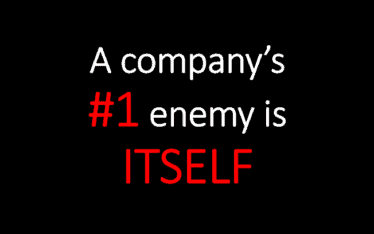It’s against human nature to react favorably to change
It’s against human nature to react favorably to change because it takes people out of their comfort zone. How have you seen people react to changes in their work? The typical reaction is resistance. Such resistance can often sabotage the best efforts of management to drive change throughout the organization. It even happens when managers are diligent communicators and active in the communication process.
When change initiatives fail, the culprit is often a lack of good communication from management. But that’s not always the whole story. Communication isn’t just about what management says – it’s also about how employees listen.
In designing the communication phase, you are beginning to prepare your organization for the transformation from current state, or practice, to the future state. At this time, business leaders need to prepare the messages that define the organization’s written principles and values. In doing so, leaders will begin to set the stage for behavioral and performance expectations. These core messages must identify the following:
The nature of the transformational change itself
Why is my company changing the way it’s always done business, and why is the change necessary?
The process of changing from the current state to the future state
The analytical and technical thinkers of our business need to understand how we plan to get from Point A to Point B so they can connect the dots in their mind’s perception of business as they know it today.
What role will I play in the change process
Many members of your organization are innovative and eager to contribute their insights and suggestions for improvement. These individuals are the free thinkers, the movers and shakers, and typically the resources we know we can routinely call upon to get things done. This is our first opportunity to recognize these individuals in order to begin assembling the change team.
Where is the resistance to change
Our initial communications must provide a mechanism to uncover potential paths of resistance to change. Unlike the practice of passing on information, good communication is two-way communication. As we make others aware of our strategy and need for change, we must also elicit feedback to better understand how our message was received.
 Infographic: Resistance to change in organizations
Infographic: Resistance to change in organizations
How will the change affect me
This is the age-old question, and one of the most important messages required to gain the desire within your organization to do something different. At all levels of the organization, the employee’s direct supervisor has the most influence over what people hear and respond to. When communicating role changes, changes to systems or tools that the employee uses day to day, or even communicating changes to pay, benefits or time off, direct supervisors are the most effective as a result of their relationship with the individual.
After a key message is developed, test it with employees. Do this informally, one on one or at selected staff meetings. Make sure to get the reactions of some employees you suspect will be among the hardest to win over. Solicit their ideas for changing the message, or parts of the message. Allowing these employees to shape the message will accomplish two goals: first, it will improve your message, making it more likely to be successful; and second, it will make your harshest critics more likely to feel a part of the communication process and, ideally, bring them on board as messengers.
After the communication cycle is complete, follow up. Structure it so that you can capture how your message was received emotionally as well as how well its content was understood. If audit results are not acceptable, you may want to conduct another wave of communications.
Communication is paramount
Communication is paramount when trying to raise the level of understanding in your organization. The key to communicating is to use multiple platforms or media to communicate the same message. And you will probably have to communicate the same message three to six times, before the message is heard and understood.
 Infographic: Top 10 ways social media can facilitate change management
Infographic: Top 10 ways social media can facilitate change management
Finally, remember that these formal steps do not replace, not should they, the day to day involvement in senior and middle management continuing to deliver the change messages on a regular basis in their informal, personal communications.
Short URL & title:
Communication is paramount when it comes to change management — http://www.torbenrick.eu/t/r/oru
Share it:
If you enjoyed this article, please take 5 seconds to share it on your social network. Thanks!








About The Author
Torben Rick
Experienced senior executive, both at a strategic and operational level, with strong track record in developing, driving and managing business improvement, development and change management. International experience from management positions in Denmark, Germany, Switzerland and United Kingdom